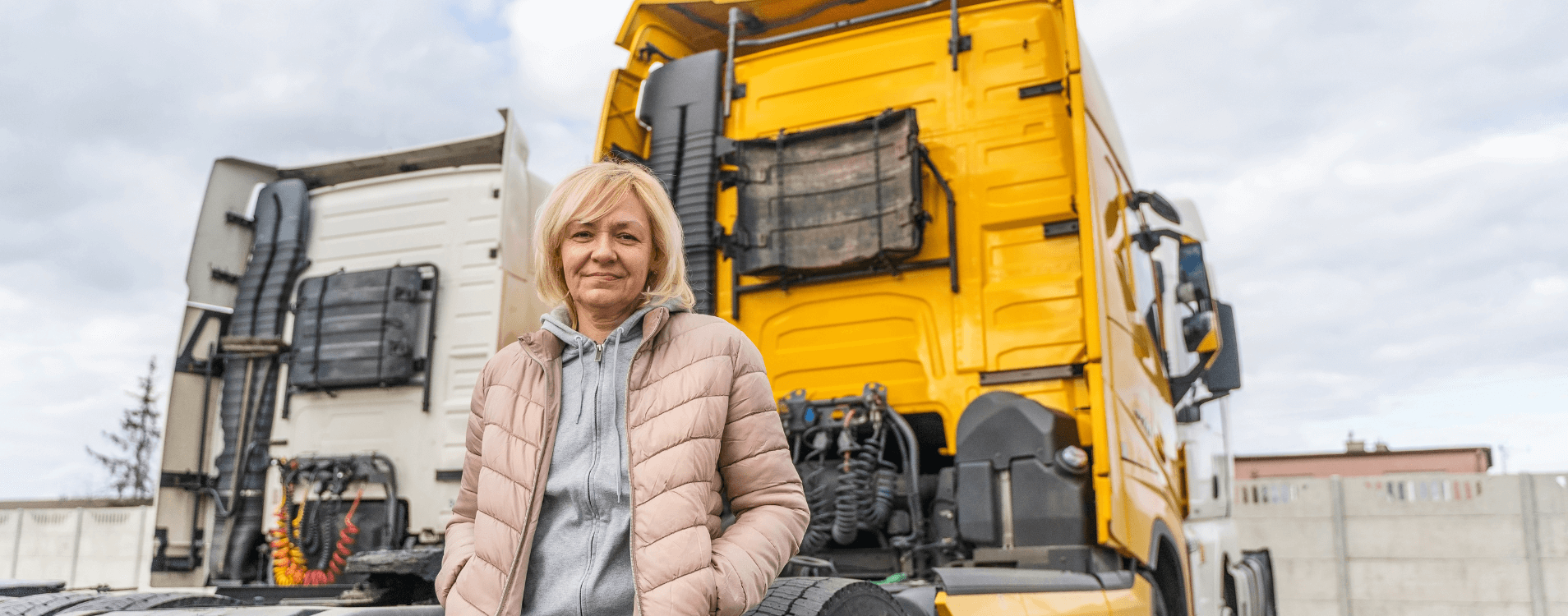Women in Trucking: Numbers, Challenges, and Opportunities
According to a report from July 2023, 12.1 percent of CDL holders are women.
As with any area of business, diversity matters. Many studies have concluded that gender-balanced teams perform better than male or female-dominated teams.
However, discrimination and other factors keep many women from pursuing careers and succeeding in the trucking industry.
So, let’s talk about it. How are women represented in trucking? What’s stopping more women from joining the industry? And what resources can women access to gain opportunities in the field?
Women’s Representation in Trucking
While about 12 percent of CDL holders are women, only five to seven percent of truck drivers in the US are women.
But the trucking business involves more people than the drivers.
Women are much better represented in administrative roles in the industry. According to the Women in Trucking Index, on average, women accounted for 43.5 percent of roles in dispatching, 41.6 percent of roles in safety, and 74.6 percent of roles in HR and talent management.
The WIT Index also showed that women are better represented among small carriers (under 500 trucks) compared to larger carriers.
After searching for several hours, I wasn’t able to find a reliable source on how women are represented in small trucking operations. So, to get a rough estimate, I took a 500-carrier sample of newly registered motor carrier authorities with between one and four Class 8 trucks from the Central Analysis Bureau. I counted how many of them had a company representative listed with a feminine name.
I found that 70 out of the sample of 500 trucking businesses listed a feminine name as a representative of the company (14 percent). However, this exercise likely still undercounts the proportion of small trucking operations that receive some level of support or involvement from a female household member or business partner.
Barriers to Entry for Women in Trucking
What has caused the gender imbalance in the trucking profession? Many complex social dynamics and structures are at play.
Gender bias and harassment continue to be a big barrier for women. According to a study by Women in Trucking, many trucking companies have made efforts to implement anti-harassment policies and sensitivity programs. However, 30% of drivers who participated in the study either didn’t know about their company’s policy or said their employer didn’t have any.
And sometimes policies meant to help women can backfire.
For example, many trucking companies require women driver applicants to be trained by female instructors. The intent behind a same-sex training policy is a good one: it’s designed to protect women’s privacy and safeguard them from harassment during the training process.
However, oftentimes, the lack of women in training roles ends up making this policy designed to protect applicants a barrier in itself. If there are no women to train you, how can you get trained at all?
Other barriers to entry for women truck drivers include the fact that truck cabs are designed for men, who typically have larger frames than women.
Women drivers also have safety concerns at truck stops and parking lots (a shared concern for all truck drivers).
Not to mention the issue that accounts for most of the gender pay gap across industries: women tend to take on more child and elder care responsibilities, requiring flexibility in work schedules.
Despite these barriers, representation for women in the industry is improving.
The challenges women face shouldn’t discourage you if you are a woman trying to break into trucking. Every career path and business will have its challenges. And there are some organizations making efforts to welcome women seeking opportunities in the industry.
Resources for Women in the Trucking Industry
Women in Trucking
WIT is a non-profit organization with a mission to “encourage the employment of women in the trucking industry, promote their accomplishments, and minimize obstacles faced by women working in the industry.” They provide a Career Center, mentoring, and discounts for members. They also serve as an online and in-person community for women.
The Women In Trucking Foundation provides scholarships to women in the fields of safety, driving, technical, and leadership.
African American Women Trucking Association
AAWTA’s mission is to unite “African American Women and Women of Color within the trucking industry while providing a platform for development and resources.” Their member discounts include dispatch, TMS, and other support services, as well as trucking scholarships and grants.
REAL Women in Trucking
REAL Women in Trucking is a movement meant to “create a safer environment for women in the trucking business.” Initiatives include policy advocacy and supporting solutions to address sexual assault and sexual harassment in trucking.
SHE Trucking Foundation, Inc.
STF, Inc. is a non-profit dedicated to helping women and minorities get into trucking as a career. Their workshops, events, care packages, and other programs encourage female truck drivers and provide a sense of community.
International Brotherhood of Teamsters
Don’t let the word “brotherhood” fool you! The Teamsters offer services for women as well as men, providing benefits including insurance, discounts, tuition programs, and relief funds.
FMCSA Women of Trucking Advisory Board
The FMCSA’s WOTAB is responsible for reviewing policies to encourage education, training, mentorship, and outreach for women in the industry.
Women in Motion
The American Trucking Association’s Women in Motion initiative is designed to provide professional development, advocacy, and networking for women in trucking.



